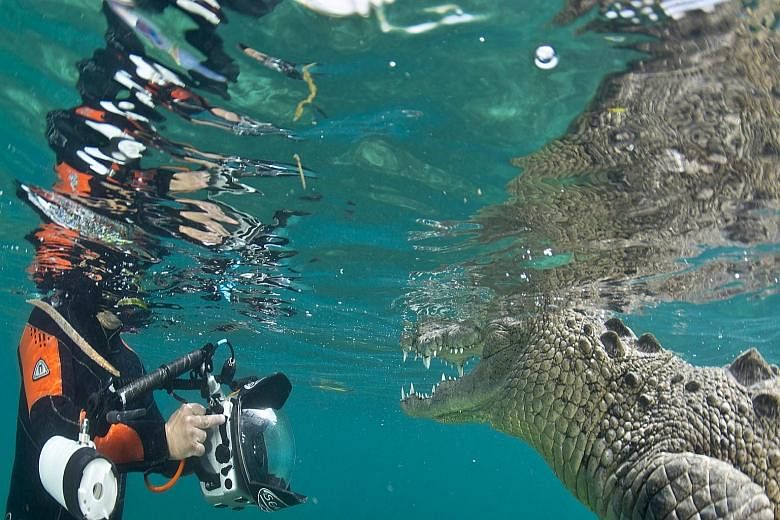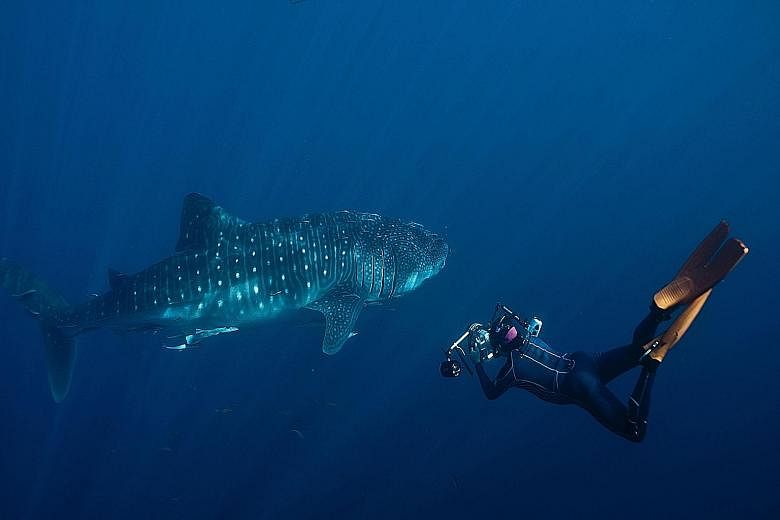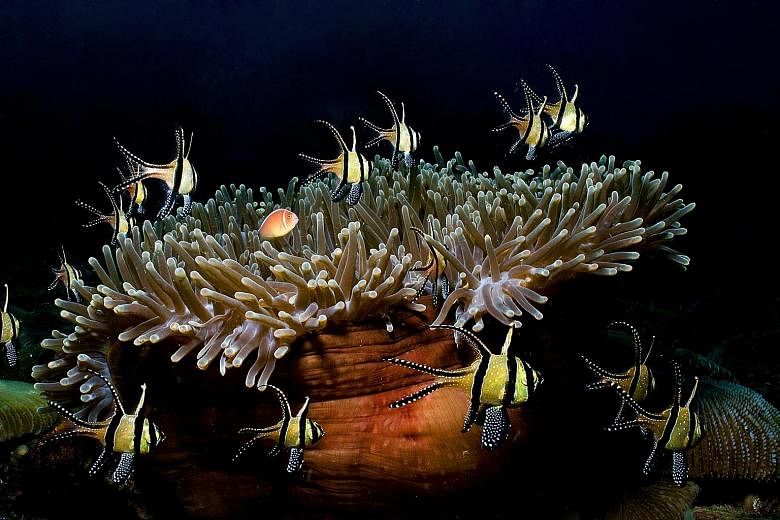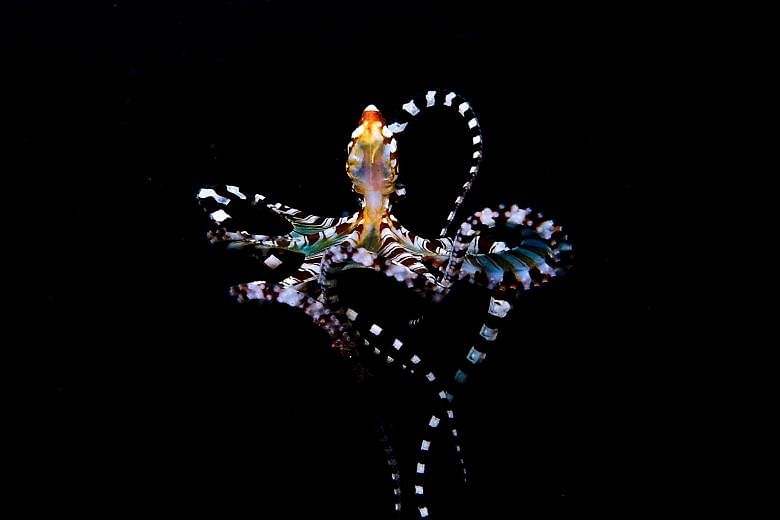Since casting aside a well-paying job in advertising 25 years ago for the call of the ocean, Singapore-born Michael Aw has been on a mission.
The 59-year-old conservation photographer, who now lives in Australia, wants to protect the endangered creatures of the deep sea.
He told The Straits Times: "More than 70 per cent of earth is covered by the ocean. It is the heart of our planet, providing food, the air we breathe and regulating the climate.
"Just as we look after our own heart and life support systems, we should also look after the ocean."
His goal has taken him across the globe as he is convinced that education is the way to spread the word.
Last month, he was in Singapore to talk about his pet topic, as part of a series of environmental events held at the ArtScience Museum.
Days later, it was announced that he had bagged a prized award in the prestigious London Natural History Museum competition on environmental photography.
Mr Aw was named the Wildlife Photographer of the Year in the underwater category, with his arresting image of a Bryde's whale swimming through a giant school of sardines and gobbling up a huge mouthful of the fishes.
That's not all. His images of marine life are regularly shown on top-rated TV channels like National Geographic and at the Smithsonian, the world's largest museum and research complex.
He also founded OceanNEnvironment in 1996, an Australian marine conservation group that documents coral reefs' status, biodiversity and the impact of man-made pollution.
And he is a senior fellow of the non-profit International League of Conservation Photographers, which aims to further environmental and cultural conservation through photography.
But his passion was not an overnight phenomenon.
It took almost 10 years in the making, sparked initially by his plunge into scuba-diving in 1981.
About five years later, he developed a love for underwater photography. "In the ocean, I become part of nature," he said, a salubrious experience that led him to quit advertising in 1990.
His pictures have since won more than 63 international awards and in 2010, he was named one of the top 40 nature photographers by British magazine Outdoor Photography.
"The sea provides my sustenance. I'm able to feed my two children and send them to school... You should always look after the hand that feeds you, so it's important for me to look after the ocean," said Mr Aw, whose wife Alison, 40, manages his photography business.
He has clocked more than 15,000 dives, swam with killer whales in Norway and gone where few have ventured: the deep ocean where the water temperature is sub-zero.
He called the polar waters "a surreal environment for the intrepid explorer - everything seems to be on steroids: bigger, stranger. I saw polar bears, leopard seals and orcas".
In 2008, he entered the ranks of explorers like Neil Armstrong, the first man on the moon, when he was inducted an International Fellow of the Explorer Club, a global society that aims to advance field research and preserve the instinct to explore.
But many marine environments have deteriorated, he noted.
"From what I've seen since the 1980s, some areas have been destroyed, fish stocks depleted, and many animals are now considered regionally extinct."
But Mother Nature is resilient, he added, noting that some places have recovered since protective measures were put in place. One such case is the Bunaken National Marine Park in Indonesia.
The Singapore Government's efforts at conserving the country's marine environment and educating the people about it also received an encouraging nod from Mr Aw.
Under an official plan, the National Parks Board piloted two dive trails at Sisters' Islands Marine Park, dotting it with 20 underwater signboards that provide information on marine biodiversity to get more Singaporeans interested in marine life.
Said Mr Aw: "The ocean is not infinite. It is finite, and it could be destroyed one day, if not already. But we have hope.
"Giving people the chance to see things for themselves will allow them to feel closer to nature, and hopefully, spur them to conserve the marine environment."






